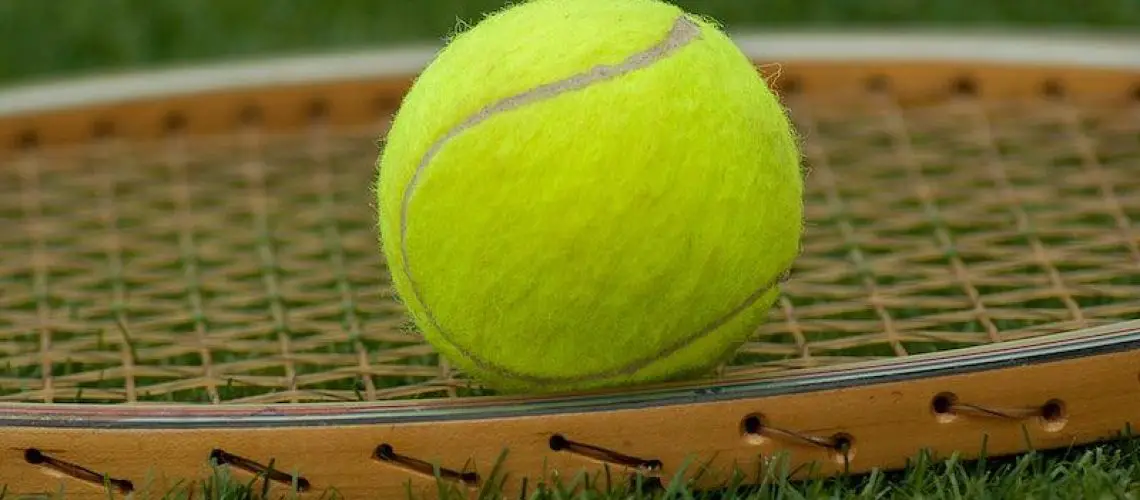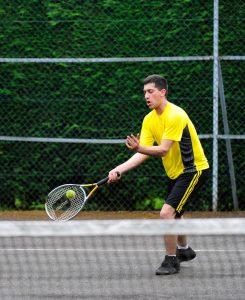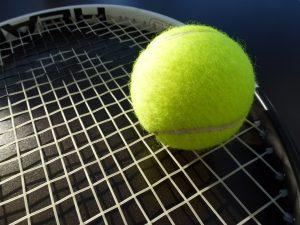We may earn money or products from the companies mentioned in this post.
Brief Overview of Tennis Balls

Tennis balls are an essential component of the sport, serving as the medium through which players engage in thrilling rallies and showcase their skills Understanding the different types of tennis balls can greatly impact a player’s performance on the court
Types of Tennis Balls
Pressurized:
Pressurized tennis balls are the most commonly used type in professional tournaments and recreational play These balls are filled with air, creating internal pressure that gives them their characteristic bounce and speed The pressurized nature of these balls allows for greater control and spin, making them ideal for players who prefer a fast-paced game
Pressureless:
In contrast to pressurized tennis balls, pressureless balls do not rely on internal air pressure to maintain their shape and bounce Instead, they are constructed with solid rubber cores that provide consistent performance over time This makes pressureless balls more durable and longer-lasting compared to their pressurized counterparts
Importance of Using Good Quality Tennis Balls for Optimal Performance

When it comes to tennis, using high-quality tennis balls is crucial for achieving optimal performance on the court
Consistent Bounce:
A good quality tennis ball ensures a consistent bounce, allowing players to anticipate and react effectively during gameplay Whether executing powerful serves or executing delicate drop shots, having confidence in the ball’s bounce is essential for players at all skill levels
Durability:
Poorly made or worn-out tennis balls can lose their elasticity and become less responsive over time This can lead to unpredictable bounces and hinder a player’s ability to execute shots accurately By using good quality tennis balls, players can enjoy longer-lasting durability without compromising on performance
Spin and Control:
High-quality tennis balls with good felt coverings enable players to generate optimal spin, enhancing their ability to control the ball’s trajectory This is especially important for players who rely on spin shots, such as topspin or slice, to outmaneuver their opponents and gain an edge in the game
Overall Playing Experience:
The right tennis balls can greatly enhance a player’s overall enjoyment of the sport A well-made ball that provides consistent bounce, durability, and control allows players to focus on their technique and strategy without distractions This leads to a more immersive and fulfilling playing experience
In conclusion,
Tennis balls play a vital role in the sport of tennis Understanding the different types of tennis balls available and recognizing the importance of using good quality ones can significantly impact a player’s performance on the court Whether it’s achieving consistent bounce, durability, spin control, or simply enjoying the game to its fullest extent, investing in high-quality tennis balls is a worthwhile decision for any avid tennis player
Factors affecting the lifespan of tennis balls

Tennis balls may seem like a simple accessory to the game, but their lifespan can greatly impact your overall playing experience Several key factors come into play when it comes to how long a tennis ball will last From the type of ball you choose to the frequency and intensity of use, as well as the storage conditions, each element plays a vital role in determining how durable your tennis balls will be
Type of ball
The type of tennis ball you use can have a significant impact on its longevity There are two main types: pressurized balls and pressureless balls
Pressurized ball longevity:
Pressurized balls are filled with air and sealed tightly These balls typically have a shorter lifespan because over time, air leaks out through microscopic pores in the rubber shell, resulting in decreased bounce and performance
Pressureless ball longevity:
Pressureless balls, on the other hand, do not contain any internal pressure They are made from solid rubber compounds that retain their shape and bounce for longer periods The lack of internal pressure allows pressureless balls to maintain their performance over an extended period
Frequency and intensity of use
The frequency and intensity at which you play also affect how long your tennis balls will last If you engage in casual play occasionally or use them for practice sessions, they are likely to last longer compared to intense competitive play
Casual play vs competitive play:
Casual players who hit the courts infrequently tend to put less strain on tennis balls On the other hand, competitive players who engage in intense rallies during matches subject their tennis balls to more wear and tear The constant impact against hard surfaces leads to quicker deterioration
Storage conditions
The way you store your tennis balls when they are not in use can significantly impact their lifespan
Temperature:
Extreme temperatures, both hot and cold, can have adverse effects on tennis ball durability High heat can cause the rubber to expand and lose its bounce, while freezing temperatures can make the rubber brittle and prone to cracking
Humidity:
Moisture from high humidity environments can seep into the rubber shell of tennis balls, causing them to become heavy and lose their bounce over time It’s important to keep your tennis balls in a dry environment to prevent moisture absorption
Exposure to sunlight:
Prolonged exposure to direct sunlight can cause the outer felt covering of tennis balls to fade and deteriorate The UV rays break down the fibers, making them less resilient and affecting their overall performance
Signs that your tennis ball needs replacement

Loss of bounce and pressure
One of the telltale signs that your tennis ball is ready for retirement is a noticeable loss of bounce and pressure As you hit the ball, it may feel flat and lifeless, failing to provide the satisfying springiness you’re accustomed to This can greatly impact your gameplay, affecting not only your shots but also the overall rhythm and flow of the game
To ensure optimal performance, tennis balls are designed to be pressurized within a specific range When they are fresh out of the can, they are usually at their peak pressure Over time and with use, however, this pressure gradually decreases, resulting in a loss of bounce It’s important to keep an eye on the pressure levels and replace balls when they no longer meet the recommended range
Wear and tear on the felt covering
The felt covering on a tennis ball plays a crucial role in providing grip, spin, and control during gameplay As you play more matches or practice sessions, the felt will naturally wear down due to friction against the court surface and racket strings Excessive wear can significantly diminish your ability to generate spin and control the trajectory of your shots
Visual cues can help you determine if a tennis ball’s felt has experienced excessive wear Look for bald spots or areas where the felt appears thinner than usual If you notice any significant changes in texture or rough patches on multiple parts of the ball’s surface, it’s probably time to retire it
Deformation or irregular shape
When a tennis ball starts showing signs of deformation or an irregular shape, it can adversely affect its flight trajectory and consistency upon impact with your racket A deformed ball may not bounce predictably, making it difficult to anticipate and react to shots during a game
Inspect the tennis ball for any visible signs of deformation It should maintain a round shape without any lumps or dents If you notice any irregularities, it’s best to replace the ball to ensure fair and consistent gameplay
Tips for Extending the Life of Your Tennis Balls

Proper Storage Practices
When it comes to preserving the lifespan of your tennis balls, proper storage practices play a crucial role One important rule is to store them in a cool and dry place Heat and humidity can cause the rubber in the balls to deteriorate faster, affecting their performance on the court So find a spot away from direct sunlight or any areas prone to moisture
Another effective method is minimizing exposure to direct sunlight UV rays can accelerate the aging process of tennis balls, causing them to lose their bounce prematurely Therefore, keeping them away from windows or outdoor areas where they are exposed to prolonged sunlight will help prolong their lifespan
Re-pressurizing Methods for Pressurized Balls
Pressurized tennis balls tend to lose their internal pressure over time, resulting in decreased bounce and performance on the court However, there are ways you can re-pressurize them and extend their life span
Commercial re-pressurizing devices are available in the market specifically designed for this purpose These devices allow you to restore the internal pressure of your tennis balls by injecting air back into them It’s an efficient solution that helps revive old balls and make them feel almost new again
If you prefer a more DIY approach, there are also at-home methods you can try For example, placing your pressurized tennis balls in a sealed container with a moist cloth overnight can help restore some of their bounce by increasing their humidity levels
Rotation Practice During Play
During intense play sessions or matches, tennis balls experience a significant amount of wear and tear due to constant impact with the racket and the court surface To extend their lifespan, it’s important to practice ball rotation
Rotating your tennis balls during play involves swapping them out regularly with fresh ones By doing so, you distribute the wear and tear evenly across all your tennis balls, preventing any single ball from deteriorating too quickly This simple practice can help prolong the overall lifespan of your entire collection
By implementing these tips for extending the life of your tennis balls through proper storage practices, re-pressurizing methods, and ball rotation during play, you can maximize their durability and ensure they maintain optimal performance on the court for a longer period of time
Useful Links

How Long Do Tennis Balls Last? [2023 Updated]
Do Sealed Tennis Balls Go Bad?
How Long Do Tennis Balls Last?
Do Tennis Balls Last Longer In The Can? – The Racket Life
How long does a tennis ball last after the can is opened but …
How Long Do Tennis Balls Last?
How Long Do Tennis Balls Last? – TennisFocusOn
Do tennis balls expire?
How Long Do Tennis Balls Last? – TennisLovers
Pressureless Tennis Balls vs Pressurized …
Best Tennis Balls: The Top Picks for Your Next Match
How long will a new can of balls last unopened?
Why Are Tennis Balls Pressurized? Professionals Advice
Tennis Balls | Buyer’s Guide + 12 Best Balls for Performance
How to Choose a Tennis Ball
Best Tennis Balls of 2023
GEAR GUIDE: How to choose the right tennis balls?
How Long Do Tennis Balls Last? [2023] –






